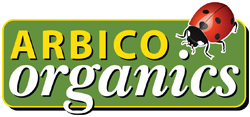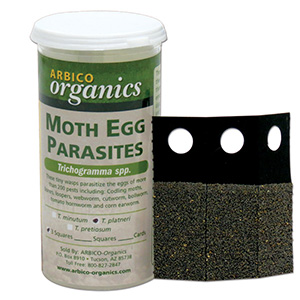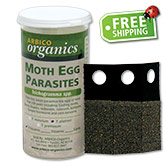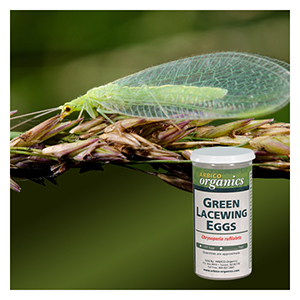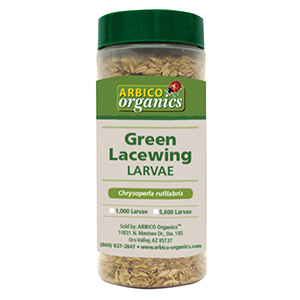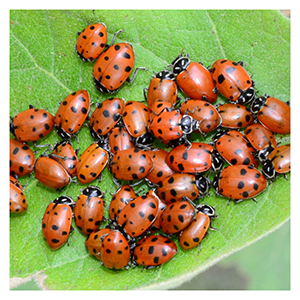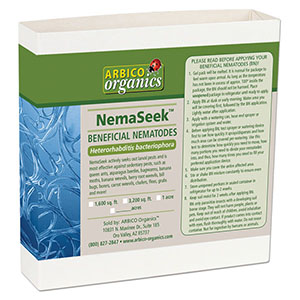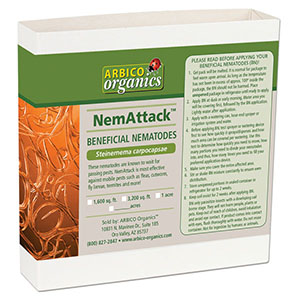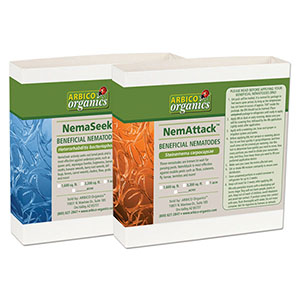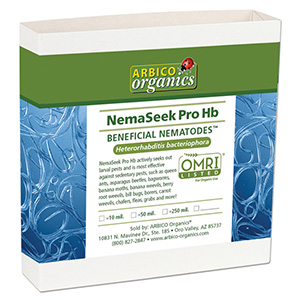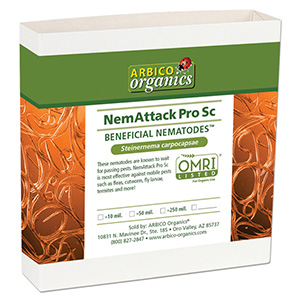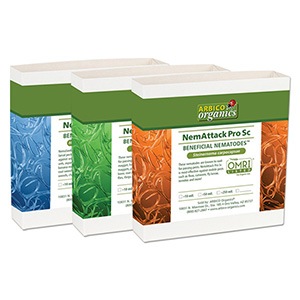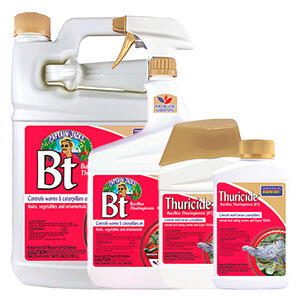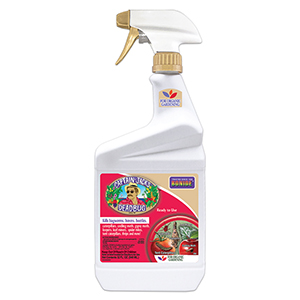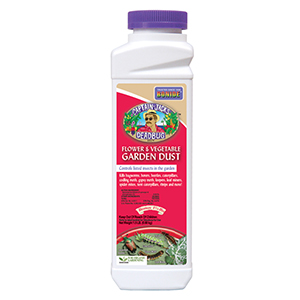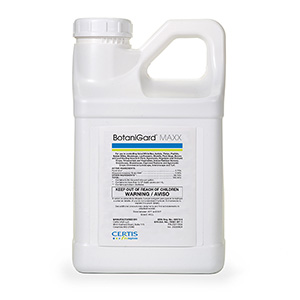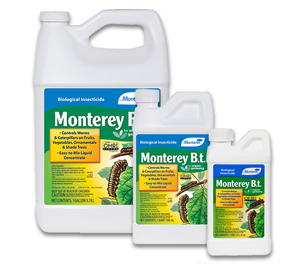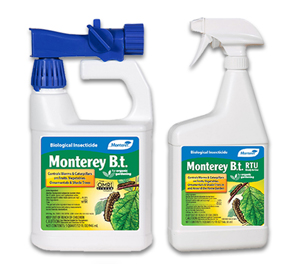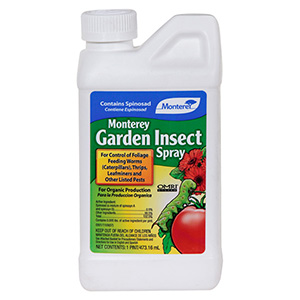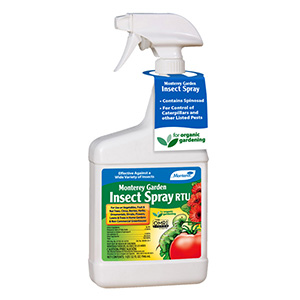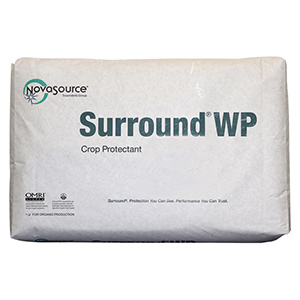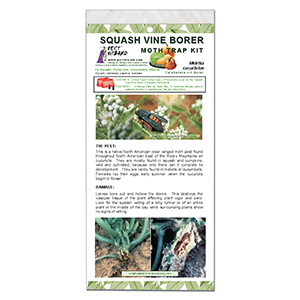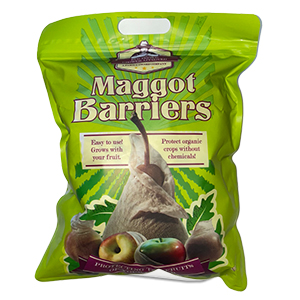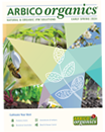Lepidoptera - Borer Moths
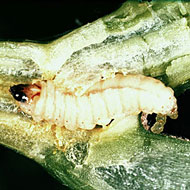 |
Lepidoptera is a large order that contains both butterflies and moths. Certain moths are classified as pest borers due to their larval activity. They are in the families Pyralidae or Sesiidae. The Pyralidae includes the cornstalk borers, carpenterworm and American plum borer, to name a few. The Sesiidae, also called clear-winged moths, include the peach tree borers, the squash vine borers, as well as grape root borers.
All Lepidoptera have the same general life cycle: the adult female moth deposits eggs on the plant the larvae will feed on; the larvae eat until they pupate; and the adult hatches from the pupae.
In the Pyralidae family, the moths lay their eggs on host plants, or on nearby similar plants, and when the larvae emerge they begin to feed. Depending on the species, they may travel from one plant to another as they develop. Some corn borers start in grasses near a field, and move to the nearby corn. It can be expected that moths in the Pyralidae family will have 1-3 generations per year depending on the species and climate conditions. The larvae will either fall to the ground to pupate or hibernate without pupating and complete their cycle the next year in the spring.
In the Sesiidae family, the moths only lay their eggs on host plants. Wood boring Sesiidae, including peach tree borers, deposit their eggs where a tree has some damage with sap seepage. The emerging larvae immediately enter the tree there and begin causing damage. The larvae generally pupate under the bark. There may be one to two generations per year. Other Sesiid moths deposit their eggs on the plant the larvae will enter. When the larvae emerge, they will enter the part of the plant that is their food source - in the case of the squash vine borer, the stem; in the case of the grape root borer, the larvae will drop to the ground, burrow, and begin to feed. Both of these borers pupate in the soil. They typically have two generations a year.
Control Moth Borers
- Monitor adult populations with Pheromone Traps designed for your specific borer. Monitoring allows you to spot pest insects before damage occurs.
- Trichogramma (moth egg parasites), Green Lacewing, Praying Mantids, and Ladybugs can be used to destroy the eggs that are deposited on the leaves before they become damaging larvae.
- NemaSeek™ Beneficial Nematodes will effectively kill over-wintering larvae in the early fall, or in the case of 2-generation borers, in mid-summer. Summer applications for borer control should be made when they pupate.
- To avoid peach tree borer problems, monitor in the early fall for possible damage and frass at the base of the tree. If any damage symptoms are found, applications of beneficial nematodes (NemAttack™ Steinernema carpocapsae and/or NemaSeek™ Beneficial Nematodes) can be made directly to the to the damaged areas to control the larvae. This is not a preventative control.
- To avoid lesser peach tree borer problems, monitor for the adults; then monitor the trees for damage and signs of borer entrance. Success has been noted using Beneficial Nematodes (NemAttack™ Steinernema carpocapsae and Steinernema feltiae) to control the larvae, though measures to maintain moisture through the canopy are recommended for best results.
- Apply Monterey Garden Insect Spray as directed to control the European Corn Borer.
- Thuricide may be applied to control the larval stage of Lepidopteran borers.
View additional Borer Control Products.
-
$16.65–$225.00
-
$16.65–$225.00
-
$16.65–$225.00
-
$18.50–$225.00
-
$27.00–$6,000.00
-
$26.00–$180.00
-
$12.95–$19.95
-
$36.00–$270.00
-
$36.00–$270.00
-
$60.00–$500.00
-
$52.00–$325.00
-
$52.00–$325.00
-
$125.00–$880.00
-
$10.97–$41.48
-
$9.99–$29.99
-
$6.75–$11.99
-
$115.00–$1,314.00
-
$13.49–$81.99
-
$14.49–$25.49
-
$15.99–$124.49
-
-
$56.25
-
$14.99–$15.99
-
$13.50
